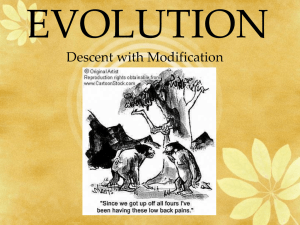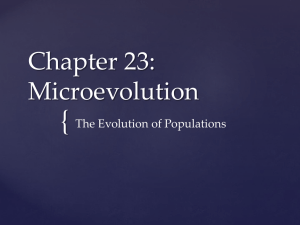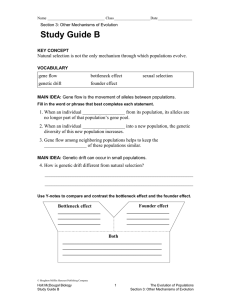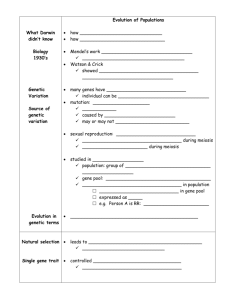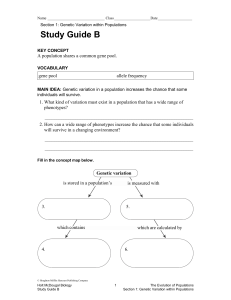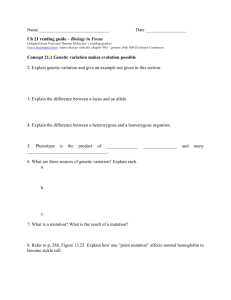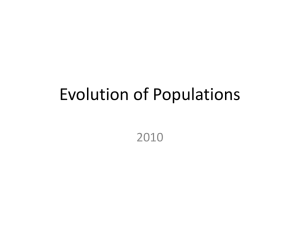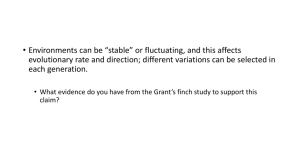Evolution JIT PowerPoint
advertisement
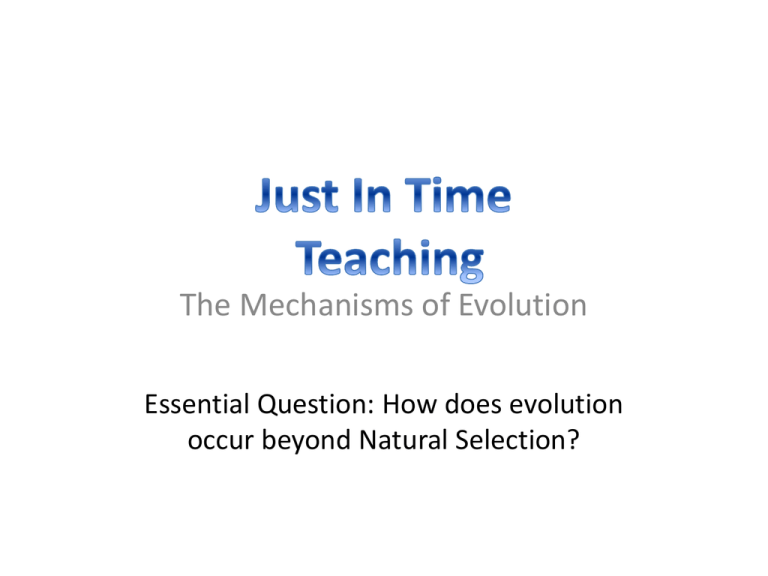
The Mechanisms of Evolution Essential Question: How does evolution occur beyond Natural Selection? Populations and Their Gene Pools • Gene Pool: consists of all the alleles in all the individuals that make up a population. This is where genetic variation is stored. • You can think of a gene pool as the hat from which the next generation draws its genes. A population is the smallest level at which evolution can occur. A common but mistaken belief is that individual organisms evolve. • Genetic Drift: a change in gene pool of a population due to chance not natural selection. • 2 types: The Bottleneck Effect & Founder Effect – All populations are subject to some genetic drift. – The smaller the population = the more impact genetic drift has on that population. – Genetic drift can have major effects on a population. • Example Natural Disaster Scenario • Gene Flow: exchange of genes with another population. • This takes place when fertile individuals or their gametes migrate between populations. • Gene flow tends to reduce genetic differences between populations. Sexual Selection (Nonrandom mating) operates in populations where males and females differ significantly in appearance. Qualities of sexual attractiveness appear to be the opposite of qualities that might enhance survival. Artificial Selection • Artificial Selection: selective breeding of domesticated plants and animals to produce offspring with genetic traits that humans value – Humans have been modifying species for thousands of years. Such as in dogs. – Darwin observed that artificial selection could create change in a species over a short period of time. Evidence of speciation is visible in the 3 main patterns of evolutions: 1. Adaptive Radiation (Divergent Evolution) 2. Coevolution 3. Convergent Evolution Adaptive Radiation, also known as divergent evolution, occurs when many species diverge from one single ancestor. Can occur in a relatively short time when one species gives rise to many different species in response to the creation of new habitat or some other ecological opportunity Follows large-scale extinction events Coevolution occurs when the relationship between two species might be so close that the evolution of one species affects the evolution of the other species. • Examples include Mutualism, parasitism, and predator-prey relationships. • Convergent Evolution occurs when unrelated species evolve similar traits even though they live in different parts of the world. • The species have analogous structures. Evolution Evolution proceeds in small, gradual steps according to a theory called gradualism. Evolution Punctuated equilibrium explains rapid spurts of genetic change causing species to diverge quickly. How are the two models similar? Different?

